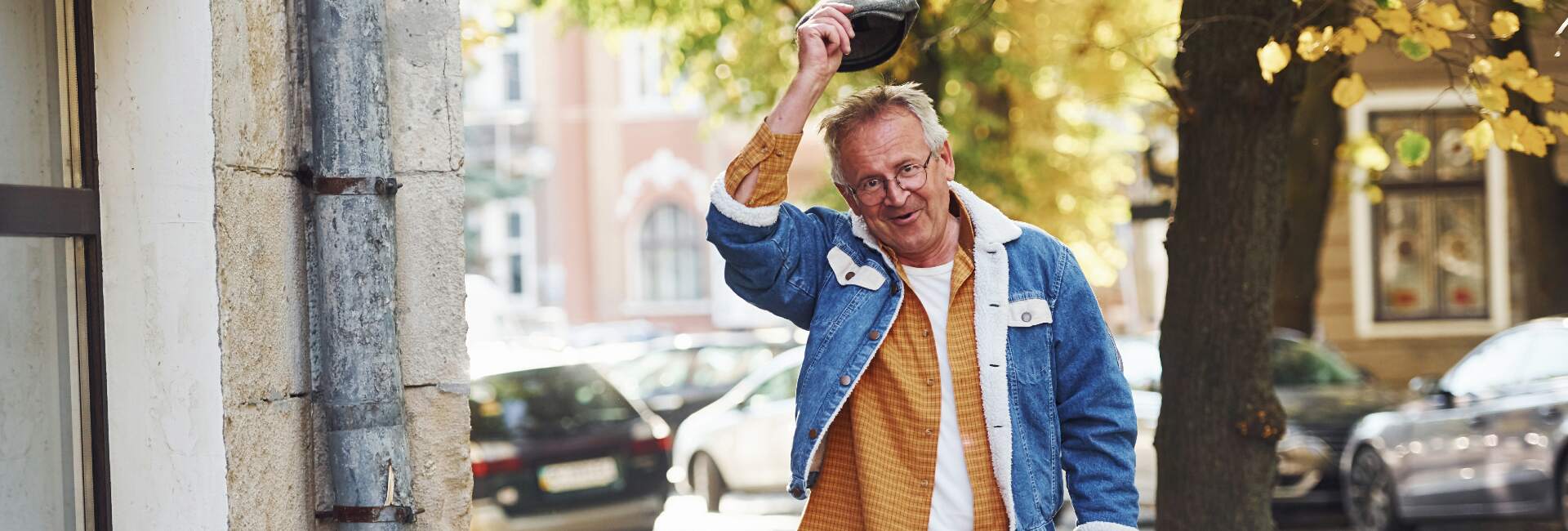Does the increased urge to urinate often wake you up in the middle of the night, or do you find yourself needing to use the restroom every hour? Do you often feel like your increased urination frequency gets in the way of your day-to-day activities? Or do you notice that you leak urine when performing specific activities such as lifting something heavy or going up the stairs?
Despite what you may have heard, male incontinence is not a normal aspect of aging. It’s a treatable condition.
Whether you’re experiencing incontinence with urgency or just have the increased frequency to urinate, a physical therapist can help you in tailoring an independent program to combat these symptoms and occurrences.
What is urgency urinary incontinence or OAB (Overactive Bladder) and what causes it?
Simply put, urge incontinence is the urgent desire to urinate associated with the uncontrolled loss of urine.
Why does it happen? There’s no one simple answer here. There can be a multitude of reasons why an individual may experience urge urinary incontinence. I’ve listed some of the most common causes below. Typically, the underlying cause is that the bladder muscle, called the detrusor, is overactive.
Some common urge incontinence triggers include hearing running water, opening the garage door or front door of your home, and not feeling secure when you’re in an area where there are no restrooms nearby

What is stress incontinence?
Stress incontinence is the involuntary loss of urine with increased intraabdominal pressure. Often, patients who have stress incontinence will experience symptoms when performing specific activities such as running, jumping, going up or down stairs, lifting something heavy, coughing or sneezing.
What are some common causes of incontinence or increased urinary frequency?
- Radical prostatectomy
- Prostatitis
- Prostate cancer
- Neurologic conditions (Stroke, Parkinson’s Disease, Spinal Cord Injury, etc.)
- Cystitis
- UTI
- Urinary stones
- Obstructions
- Weakness in the pelvic floor
- Overactive pelvic floor
- Increased weight
- Smoking
- Age related changes
- Diet (caffeine, alcoholic beverages, carbonated beverages, spicy foods, highly acidic foods such as tomato based products and citrus fruits can contribute to the condition)
- Bathroom habits that have been formed over time, including “Just in Case” voiding
What is the normal physiology of the bladder?
You may wonder how long it takes the bladder to fill, and how often you should pee on a daily basis. What is considered normal? Like most things in life, everyone is different.
The normal amount of times someone voids in a 24-hour period is six to seven times a day, or, on average, waiting two or more hours between visits to the restroom. This can vary widely with some people going as few as 4 and others as often as 10.

The average bladder is able to hold about 2 cups of urine, which studies show takes an average of 9-10 hours for your body to produce depending on how much fluid you drink.
That does not, however, mean you should not feel the urge to urinate sooner than that. Research tells us that receptors in your bladder tell your brain that you need to pee when it is only a quarter of the way full.
What are good bladder habits?
Good bladder habits can help keep your bladder healthy and keep you from developing urinary incontinence. Bladder training can even be an effective part of treating urinary incontinence, reducing the sense of urgency and helping control leakage. Incorporate the following tips in your daily routine.
- Make sure you are taking your time when toileting and use a comfortable position.
- Avoid straining/pushing out the flow of urine — urine should flow easily and at a steady stream.
- Avoiding “JIC” (Just in Case) voiding should be avoided. What this means is that you should only use the restroom when your bladder is full and you have a strong urge to go. Don’t use the restroom just because you are trying to avoid having to go at a later moment.
- Don’t hold your bladder for too long.
What is the best way to maintain good bladder health?
There are a number of ways to keep your bladder happy and healthy, including practicing good bladder habits as outlined above. Other tips include:
- Drink fluids throughout your whole day. How much water to drink will be dependent on your body size, but a good rule of thumb is to drink between half an ounce to an ounce of water for each pound you weigh. So for instance, if you weigh 180 pounds, you should drink at least 60 ounces of water in a day.
- Limit the amount of alcohol, caffeine, chocolate, artificial sweeteners, spicy foods, acidic foods (tomato based foods, citrus foods), and carbonated beverages you consume daily since these are common bladder irritants.
- Focus on maintaining the strength of your pelvic floor.

What are the pelvic floor muscles and why are they important?
The pelvic floor includes a “sling” of muscles that attaches from your pubic bone to your tailbone at the bottom of the pelvis. Together, the pelvic floor muscles serve a range of functions including:
- support the pelvic organs, bladder, and colon
- start and stop the flow of urine as well as the passage of flatulence and bowel movements
- stabilize the hips, lumbar spine, sacrum, and pelvis when we move
- move blood and lymphatic fluid back toward the heart
- sexual function
How do I engage the pelvic floor muscles?
Most folks are familiar with the term “Kegel.” But what are Kegels and can anyone do them? A Kegel is an exercise that specifically targets the pelvic floor muscles.
To do a Kegel, think about the sensation of stopping the flow of urine mid-stream or of holding back gas or a bowel movement and replicate the way you would tighten those muscles in those instances. It should feel like the sling of muscles is tightening and you may even experience a lifting sensation upward.
Are you nervous or uncertain about seeing a PT for the following symptoms?
While Men’s Health Physical Therapy is a relatively new and somewhat poorly understood, it is an ideal option for men experiencing pelvic floor dysfunction, including urinary incontinence.
Physical therapy has a high success rate in treating pelvic floor symptoms – 70-80 percent.
There are many ways physical therapists work with patients to help them achieve control of their bladder and bowels. Treatment plans vary based on individual situations.

Common treatments to expect when you see a physical therapist for Pelvic health physical therapy may include:
- Bladder retraining
- Voiding diaries
- Quick Flick Maneuver
- Mind-set / distractors
- Pelvic floor strengthening
- Kegels
- Diaphragmatic breathing
- Transverse Abdominis recruitment via Posterior Pelvic Tilt
- Diet modification
- Alcohol beverages
- Caffeine
- Carbonated beverages
- Artificial sweeteners
- Spicy foods
- Acidic based foods (tomatoes, citrus)
- Biofeedback
- Specific surface EMG for the pelvic floor

Start your physical therapy journey today.
Our professional and caring staff have specialized training to meet the unique needs of all individuals throughout their lifespan. Through education, manual therapy, biofeedback and exercise, our goal is to improve your function, decrease your pain, and guide you on your personal path to improved health and wellness.
